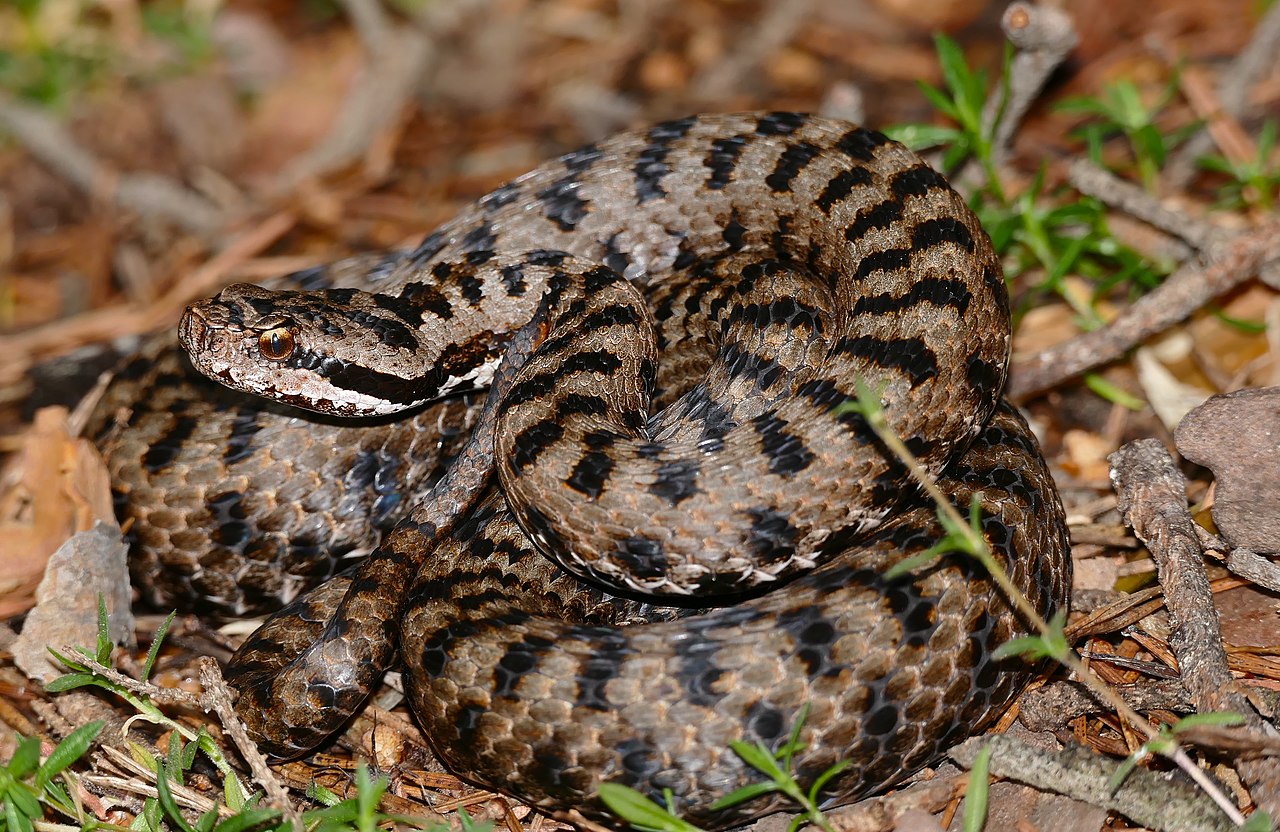The Asp Viper
The Asp viper is a venomous snake that occurs in southwestern Europe. The head of this snake is broad, triangular and quite distinct from the neck. The tip of the snout is slightly but distinctly upturned. Males are generally grey in color while the females can be grey, brown and various shades of orange. The dorsal markings vary strongly but only rarely take the form of a clear zigzag pattern.

Distribution
Asp Vipers are found in France, Andorra, northeastern Spain, extreme southwestern Germany in the southern Black Forest, Switzerland, Italy, San Marino, and northwestern Slovenia. These snakes have specific habitat requirements. They need warm areas that are exposed to the sun, structured vegetation and comparatively dry soils. In Italy and France, they are often found in areas with low mountains or hills, notably in limestone regions, but sometimes occur in lower plains. They prefer vegetated areas or environments with at least some coverage. Here they can be found on sunny slopes, on scrublands, in glades, in mountain meadows, forest clearings, at the borders of woods, in rubbish dumps and in stone quarries. In Italy, Asp vipers occur in mesic chestnut/oak woodlands and often near streams.
Description
With up to 80 cm (31,5 inch) of maximum body length Vipera aspis is the largest of the three viper species which inhabit the Iberian Peninsula. However, the average size is between 60 and 65 cm (23-26 inch). The head is triangular shaped and the snout is slightly upturned, although not as prominent as in Vipera latastei.
A postocular stripe is present, more noticeable in males. The pupil is elliptical and is always kept in a vertical position. Generally the males are grey in colour while the females are grey or brown.
Biology
The more alpine populations tolerate lower temperatures, however their activity period is reduced to just five or six months during the year. Specimens which inhabit lower altitude zones have an activity period of seven or eight months. This species shows a marked diurnal activity. In general terms the Asp Viper shows greater activity patterns than Vipera latastei, and it is also more abundant; the number of specimens per square kilometre in a given population is considerably greater in Asp Viper.
Diet
The Asp Viper is a diurnal predator which lies in wait for prey. It uses its venomous apparatus to kill the prey. Adult specimens feed primarily on rodents, completing their diet with lizards and small birds. It normally takes about a week to digest an item prey, and in the wild they will feed every three or four weeks. Juveniles feed almost exclusively on lizards.
Reproduction
Females usually have a biannual reproductive cycle. The copulations occur between April and May, several weeks after hibernation.
The gestation period lasts between three to four months and birth takes place by the end of August or the beginning of September.
An average of 6 or 7 perfectly formed baby vipers are born which will realize their first shedding shortly after birth. A few days later the young will start feeding.
Venom
Even though an adult healthy human being can overcome an Asp viper bite without too many complications, certain kind of people such as children and elderly or unhealthy persons may suffer serious complications which could be fatal. Hence, a bite should always be monitored by a doctor and treated in a hospital.
The Asp Viper venom registers an LD50* of 4,6 to 20,1 mg (Duguy and Saint-Girons, 1970; Saint-Girons et al., 1983). The lower values correspond to Vipera aspis zinnikeri which means it is the subspecies with the most toxic venom, thus making it the most dangerous viper in the Iberian Peninsula. LD50: (Lethal Dose 50% or median lethal dose) is the dose required to kill half the members of a tested population (laboratory mice) after a specified test duration. Expressed in milligrams, it indicates the degree of toxicity of a venom; lower values of LD50 indicate a higher toxicity.
Comments
Post a Comment